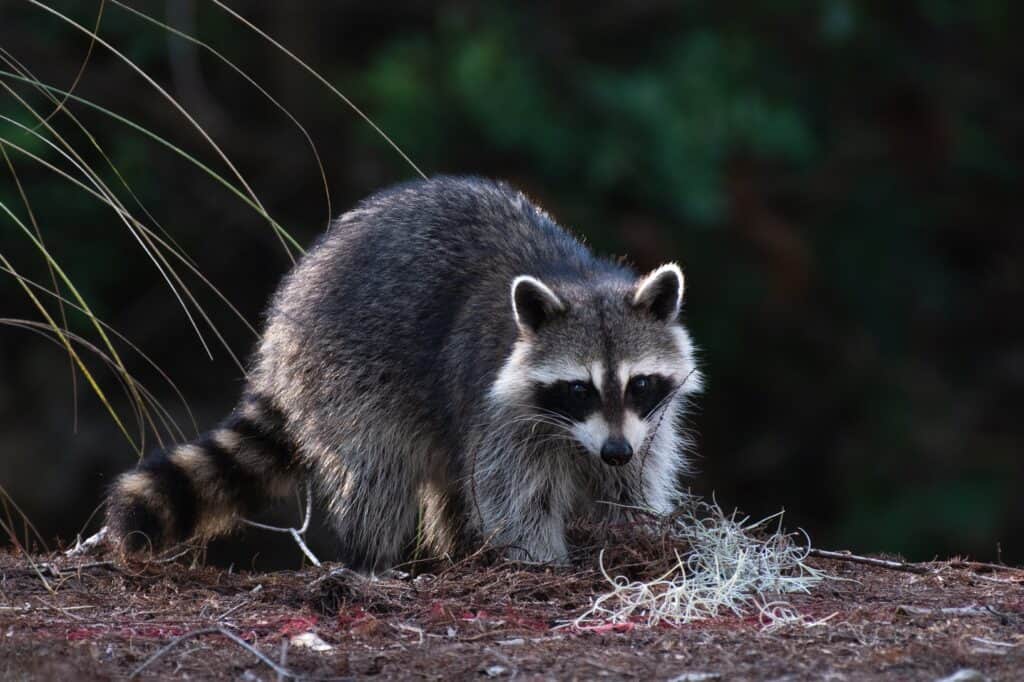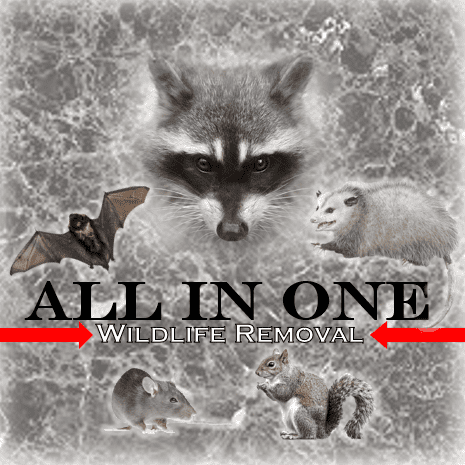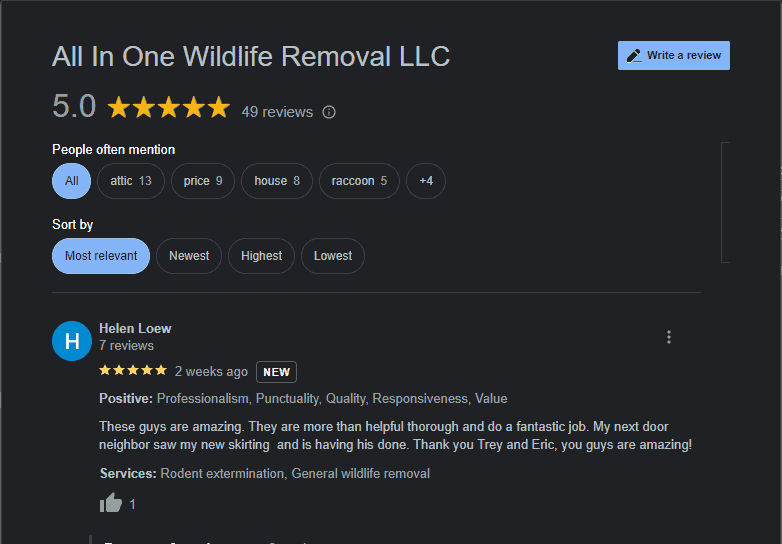Removing Raccoons In The Attic
Identifying Raccoon Noise in the Attic:

Raccoons
Loud thuds, growling, and purring, typically active at night but can also be heard during the day.
Removing Raccoons From The Attic
Our Process:
- Sealing Entry Points: Ensure no reentry with our thorough sealing solutions. We use metal products to seal entry points to prevent raccoons from chewing or tearing through again.
- Trapping: Safely remove unwanted raccoons through the use of one-way doors, traps, or evictor fluids.
- Sanitization: Protect your attic with our antimicrobial treatments. This kills the bacteria left behind by the animal feces and removes the pheromone scent.
Get Your Raccoon-Free Attic
We’re here to bring peace back to your home. Fill out the form below to schedule a no-obligation, free inspection with our wildlife removal experts.
FAQs About Wildlife In Attic
What kinds of wildlife commonly infest attics?
Rats, squirrels, bats, raccoons, and opossums are some of the most common wildlife found in attics.
How do animals get into the attic?
Wildlife typically enters the attic through various openings such as roof vents, soffits, and loose or damaged shingles or tiles. They can also exploit construction gaps and chimneys.
How can I tell if there’s wildlife in my attic?
Common signs include noises such as scratching, scurrying, or thumping, as well as the presence of droppings, strong odors, or visible entry points on your roof or eaves.
Is it safe to remove wildlife from the attic by myself?
It’s advisable to seek professional help due to potential health and safety risks. Professionals are trained to handle animals humanely and effectively, ensuring all animals are removed.
What does the wildlife removal process involve?
Professionals typically conduct an inspection, followed by a tailored removal process that may involve trapping, exclusion, or deterrents. They will also seal entry points to prevent future infestations.
What are the risks of having wildlife in the attic?
Wildlife in the attic can cause structural damage, spread diseases, leave behind parasites and droppings, and create fire hazards by chewing on wires.

